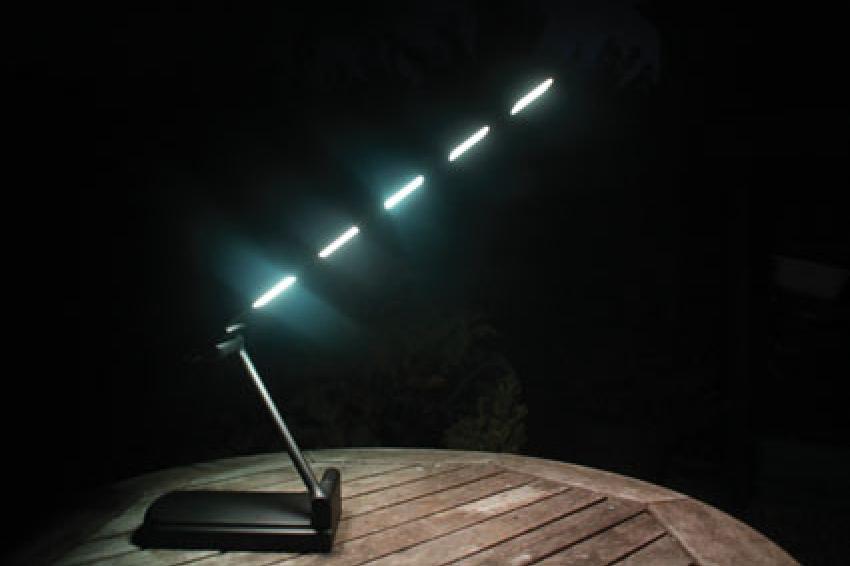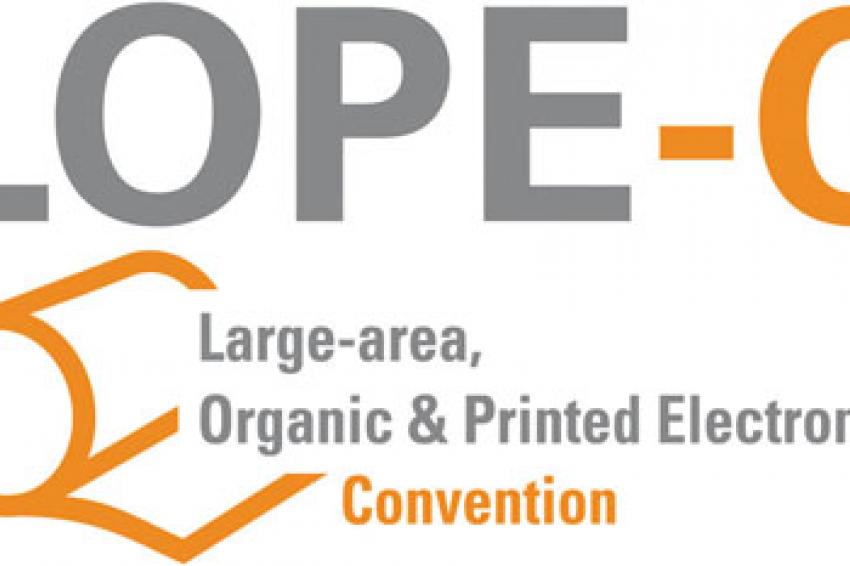Organic Solid State Lighting
The Lighting Solution For The Future
Viewpoint - Grand challenges lie ahead in Europe's future: The continent is working to become more energy efficient and greener. Dr. Geoff Williams, leader of the UK's Technology Strategy Board's Project Topdrawer polymer organic solid state lighting technology program, reflects on his own childhood to offer advice for lawmakers.
There are, in principal, two competing technologies: organic light emitting diodes - OLEDs - and polymer light emitting diodes - PLEDs.
OLEDs are, in principle, based on complex multiple layer device structures of thermally evaporated low molecular weight molecules. Whereas PLEDs are solution-processable structures based on a single white-light emitting polymer, deposited by printing on to charge transport layers; typically PLEDs are three or four layers thick. Both devices represent extended emissive surfaces with areas up to one-fifth m2 already being demonstrated from the laboratory. However, in general, lab-made devices are much smaller, generally tenths of square centimeters in area. The main research effort continues within the materials, striving for improved quality of white light, lifetimes and efficacy.
Presently, OLEDs outperform PLED technology on laboratory test samples, but due to the complexity of manufacturing multiple layer structures, it is widely believed that solution-processable PLED technology will be first to demonstrate high direct yield manufacturing levels, due to their less complicated device structures and atmospheric pressure deposition printing processes, which also will yield very high material utilization (>90%).
Going ‘Topless'
A collaborative program to take PLEDs closer to the lighting market was created during 2006, resulting in funding for Project Topless (Thin Organic Polymeric Light Emitting Semiconductor Surfaces) in early 2007. Topless, headed by Thorn Lighting, was the UK's only industrial-led PLED program of work, involving Cambridge Display Technology (CDT) and the University of Durham. Topless submitted its final reports in early 2010, achieving with the best devices greater than 20 lumens per watt (lm/W) with half life of about 30,000 hours at 500 candela per square meter (cd/m2). However, is expected by 2015 PLED devices will exhibit greater than 60lm/W with 70% life being greater than 20,000 hours. Topless devices were typically driven at 4V DC (voltage in a direct current), were tunable over a wide range of brightnesses (1cd/m2 to 1 million cd/m2, although devices don't last long at these elevated levels).
However, the commercial challenge is one of integration in to lighting applications that deliver significant improvements and benefits over the incumbent lighting technologies; in particular electrical energy reduction (lighting accounts for 20%), and therefore CO2 reduction. Today artificial lighting generates almost 2,000 million tons annually).
Airfix Model for a Sustainably Built Environment
When I was a young lad, I painstakingly brought Airfix model airplane kits to life. One of the quickest lessons I learned, particularly with the complicated bomber kits, was that following the assembly sheet was the quickest way to success and ensured that you didn't have your engines on back to front.
Cast forward three or four decades, and I am now consumed by a slightly more sophisticated passion - developing the lighting of the future. Using printable electronics, my team is developing solid state OLEDs that are capable of running on a 5V DC battery at a fraction of the energy usage of modern incandescent light bulbs.
The UK Technology Strategy Board awarded Project Topdrawer (Thin Organic Prototypes, Design, Applications with End-user Recognition) the single largest investment of any printable electronics R&D initiative at the end of last year - an indication of its potential once fully commercialized. Topdrawer is an extension to Topless, introducing further businesses in to the collaboration: Tridonic, Pilkington and Conductive Inkjet Technologies. One of Topdrawer's remits is, through working on the newly commissioned Large Area Coating Equipment (LACE) line in the UK's Printed Electronics Technology Centre (PETeC), to demonstrate manufacturability of 225cm2 PLED light emitting tiles, in conjunction with novel electronic driver configurations dedicated to lighting applications.
However, this technology is only one piece - albeit a highly important piece - in the carbon-reduction "Airfix kit" that the governments across Europe are developing. Significant investment in renewable energy production, emerging battery technologies, breakthroughs in new smart sensor technology, innovations in building materials such as Hempcrete (mixing hemp and lime which absorbs CO2 from the atmosphere) and photovoltaic cells in windows are all shaping the intricate pieces that will be brought together in the buildings of the future.
But, and this is a serious but, while my fellow industrialists and I are working towards delivering sustainable, affordable and robust products that will make up these buildings, there is growing concern about the lack of an "assembly sheet" that maps out how all the technologies will work together.
Tangible Outcome
There is an excellent opportunity to get innovations out of the lab and into commercial testing but there comes a point where we need to mould these products into a tangible outcome - in this case, fully functioning, carbon neutral buildings with greatly reduced energy needs. Strategies need to be implemented and championed by the higher echelons of Europe and there after the nation states if this is to be realized by the end of 2020.
Politicians need to beg in focusing on the grand challenges that currently face us and to act on the responsibilities that lie in their remit to genuinely drive change. In my sphere, this is about using technological advancements to reduce carbon emissions effectively in a manner that doesn't just throw money at potential solutions but also creates a blueprint for what this will look like in the future. By doing so, industrialists such as myself can see how our products will dovetail with others and will also set the framework for architects and other specifiers to turn the potential into reality.
This need not be arduous, over complicated or take years of consultancy to achieve. The use of focused national strategies and funding for businesses to encourage research laboratories and academics to work together will ensure the all European states meet their 2020 obligations for energy consumption and CO2 footprint reductions.
A great deal can be learned from the aerospace industry. That sector would never set out to build an airplane based on the off-chance that the integrated technologies will work together in an optimized, safe way. So, why should we expect high technology carbon neutral/negative building constructions to emerge ad hoc?
So, I would encourage other environmental ministers across Europe to think instead about my Airfix models. We are making the parts, but we urgently need the assembly sheet to make sure that Europe leads the way in carbon-neutral, reduced energy buildings of the future.
Contact
Thorn Lighting Ltd.
Butchers Race
Spennymoor,County Durham
+44/1388/420042
+441388/420156






